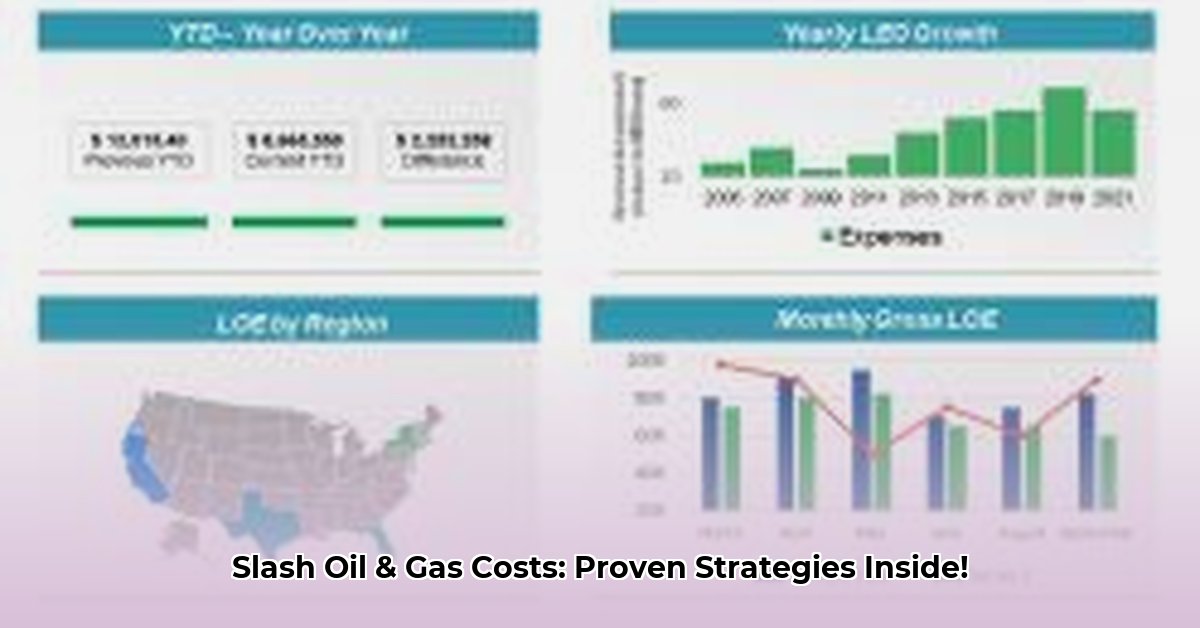
LOE Optimization in Oil and Gas: A Strategic Guide
High Lease Operating Expenses (LOEs) significantly impact profitability in the oil and gas industry. Traditional cost-cutting measures often prove ineffective or even counterproductive in the long run. This guide presents a proven, data-driven approach to sustainably reduce LOEs through strategic implementation of Industrial Internet of Things (IIoT) technologies and best practices. It’s not just about short-term savings; it's about building a more efficient and resilient operation.
Understanding the Limitations of Traditional Cost-Cutting
Many companies attempt to lower LOEs through immediate actions like reducing maintenance budgets or workforce size. However, this often leads to increased operational risk and higher long-term costs due to equipment failures, safety incidents, and decreased production. Isn't a more sustainable approach necessary? The answer lies in embracing proactive, data-driven strategies.
IIoT: A Technological Leap Forward for LOE Reduction
The Industrial Internet of Things (IIoT) offers a transformative solution. By deploying a network of sensors and smart devices across your operations, IIoT provides real-time data for predictive maintenance. This allows for proactive interventions, preventing costly equipment breakdowns and maximizing uptime. How much could this strategy save your company? Real-time data reveals inefficiencies previously hidden in traditional reporting methods.
A Step-by-Step Guide to IIoT Implementation for LOE Reduction
Comprehensive Assessment and Planning: Begin with a thorough assessment of your existing operations, identifying areas with the highest potential for improvement. This involves recognizing critical assets, data needs, and possible integration complications. Effective planning is crucial for success.
Pilot Program Implementation: Initiate a small-scale pilot program in a controlled environment to test IIoT technology and refine your strategy. This minimizes risk and enables valuable learning before full-scale deployment.
Data Integration and Consolidation: Integrate data from diverse sources (sensors, SCADA systems, etc.) into a central platform. This unified view is crucial for efficient performance analysis and informed decision-making.
Leverage Asset Performance Management (APM) Software: Invest in comprehensive APM software to analyze collected data, predict maintenance needs, and optimize resource allocation effectively. Look for software with clear visualizations and actionable insights.
Invest in Training and Workforce Development: Thorough training for your personnel is essential to ensure effective utilization of the new technology and data-driven insights. Training boosts employee confidence and maximizes the return on investment.
Scalable and Phased Implementation: Following a successful pilot program, gradually expand IIoT implementation across your entire operation, managing data security and compliance with applicable regulations at every stage.
Continuous Monitoring and Optimization: IIoT implementation is an ongoing process requiring continuous monitoring, performance analysis, and adjustments to optimization strategies based on real-world outcomes. Adaptability is key.
Optimizing Specific Operational Areas with IIoT
IIoT’s benefits extend beyond maintenance. For example, real-time monitoring of compressor operations enables more efficient energy management, while in saltwater disposal, IIoT contributes to waste reduction and enhanced environmental compliance. The possibilities are extensive and vary greatly depending on individual operational contexts.
Stakeholder Roles and Responsibilities
Effective LOE reduction requires collaboration among various stakeholders. Here's a breakdown of short-term and long-term actions:
| Stakeholder | Short-Term Actions | Long-Term Actions |
|---|---|---|
| E&P Companies | Pilot IIoT programs; analyze existing data for quick wins. | Full-scale IIoT implementation; develop advanced predictive models and analytics. |
| Equipment Manufacturers | Offer IIoT-ready equipment; create comprehensive maintenance packages. | Focus R&D on more efficient equipment and technologies. |
| Regulators | Promote data-driven best practices; facilitate data sharing. | Update regulations to incentivize cost-effective and sustainable practices. |
| Investors/Analysts | Evaluate LOE reduction strategies and technology investments. | Develop new financial models reflecting the value of digital transformation. |
Risk Assessment and Mitigation
Implementing IIoT brings certain risks: high initial investments, data security threats, integration difficulties, and the need for skilled personnel. Addressing these challenges requires a proactive approach:
| Risk Factor | Mitigation Strategy |
|---|---|
| High upfront investment | Phased implementation; explore funding options; careful budgeting. |
| Data security breaches | Robust cybersecurity measures; data encryption; regular security audits. |
| Integration challenges | Partner with experienced integrators; ensure system compatibility. |
| Lack of skilled personnel | Comprehensive training programs; recruitment of qualified professionals. |
| Inaccurate predictions | Continuous data validation; regular refinement of predictive models. |
Regulatory Compliance and the Path Forward
Adherence to data privacy regulations (like GDPR and CCPA) and environmental guidelines is vital. Proactive engagement with regulators is crucial for avoiding costly penalties and ensuring compliance. Embracing digital transformation is no longer optional; it's essential for building a more sustainable and profitable future in the oil and gas industry.
Key Takeaways: A Sustainable Path to Lower LOEs
- Traditional cost-cutting methods often lead to increased long-term expenses.
- IIoT technology provides a sustainable approach to reducing LOEs.
- Predictive maintenance, enabled by IIoT, minimizes costly downtime.
- Data-driven insights optimize resource allocation and efficiency.
- Successful IIoT implementation demands careful planning, collaboration, and risk management.